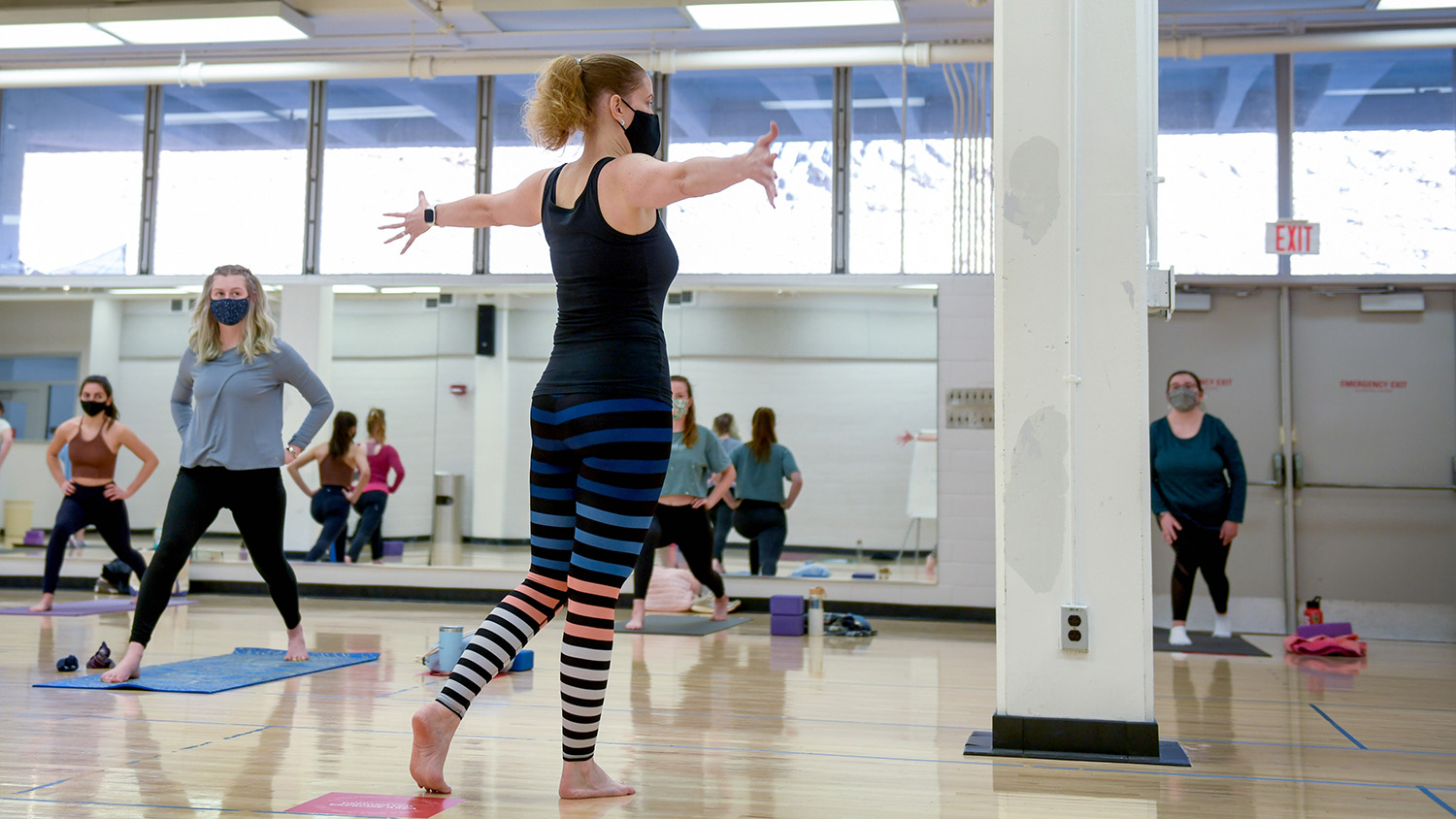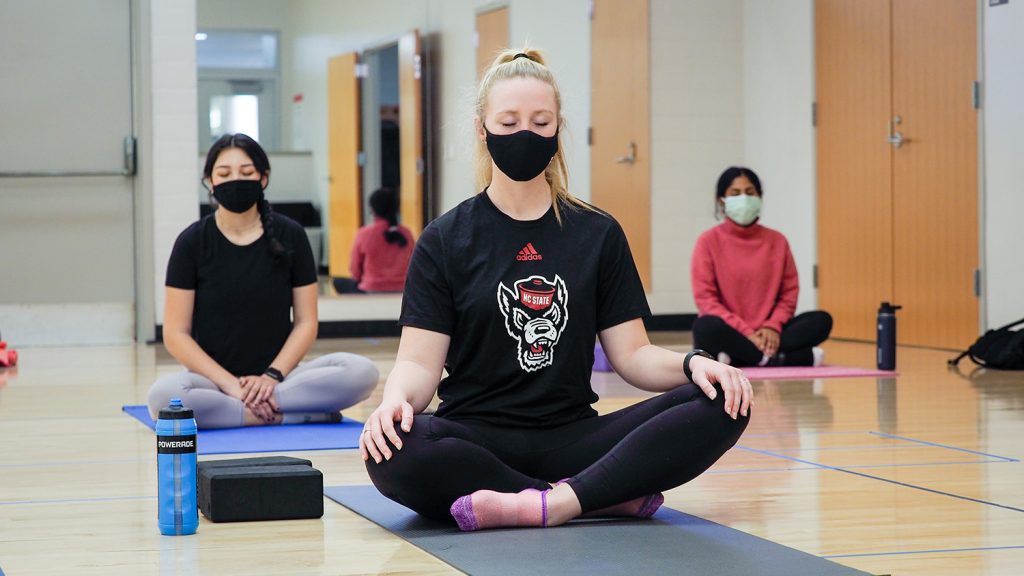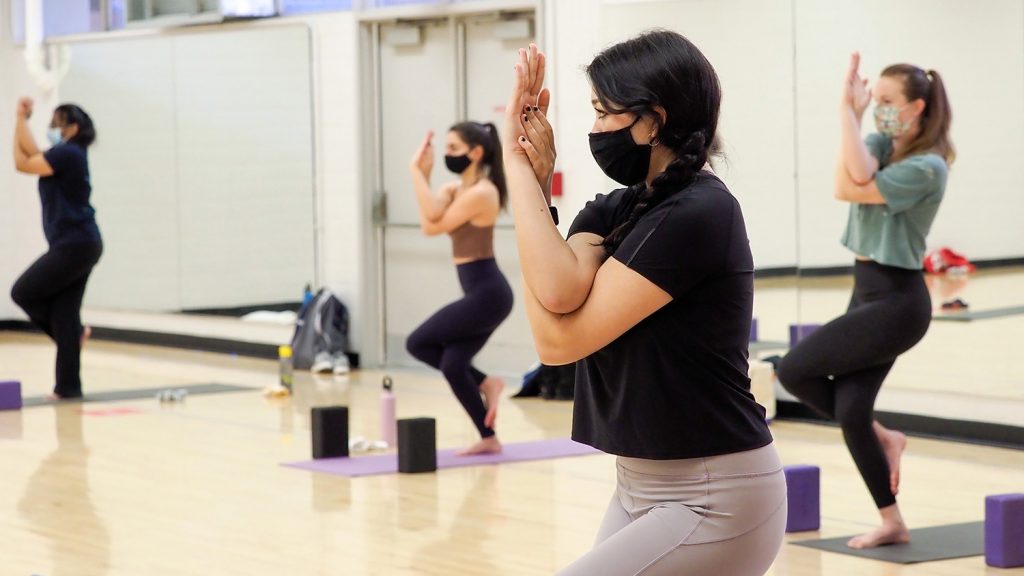Yoga for Life
Autumn Belk teaches students to master yoga's ancient techniques to achieve harmony of mind and body and improve overall well-being. The lessons can last a lifetime.

Autumn Belk’s first experience with yoga was almost her last.
“When I was in high school, I had a VHS tape of yoga, and I thought it was horrible,” she says. “The poses were super slow, and I just thought, this is not for me.”
Belk, now an associate teaching professor in NC State’s Department of Health and Exercise Studies, teaches several popular yoga courses, primarily for undergraduate students. She can attest that first impressions don’t always last.
Nearly a decade after she shelved that VHS tape, Belk got a proper introduction to the practice of yoga from faculty and staff at the University of Maryland, College Park, where she was pursuing a Master of Fine Arts in dance.
“We had a choreographer and a couple of professors who practiced yoga, and they started putting yoga techniques into our dance rehearsals and dance classes,” she says. “That sparked my interest again. These were people I really respected. If they were doing yoga and it was benefiting them, I thought maybe I should do it, too.”
After learning more about yoga principles and completing a course on how to teach yoga, Belk was hooked. “It was different than what I thought yoga was. I knew I needed to teach right away.”
Belk now does for NC State students what that old VHS tape failed to do for her: make the ancient Indian practice of yoga fresh and relevant to everyday life. That’s more important than ever in a time of social and physical isolation due to a global pandemic.
“I want students to understand how to develop a physical yoga practice that they can continue years into the future,” Belk says. “I guide them through the postures and the breathing techniques so they can understand their body and develop strength and flexibility.
“But I also I want my students to know the historical background to yoga and the overarching philosophy — the stuff you don’t get if you go to a yoga class in a gym.”
Mind – Body Connection
In Sanskrit, yoga means yoke or union. By mastering three components — posture, breath and focused concentration — practitioners seek a unity of mind and body, as well as a connection to a higher spiritual consciousness.
Yoga’s teachings include the five rules that govern your actions toward others, called yamas, and the five rules that govern your internal thoughts and actions, called niyamas. Asanas are the poses and postures that most people recognize, such as downward-facing dog, and pranayama is breath control used to prepare the body for meditation.
Although yoga’s roots are in Hinduism — it was first mentioned in ancient Hindu religious texts called the Vedas — Belk says its ethical precepts can be applied broadly, encompassing concepts such as nonviolence, truthfulness and moderation.

“How we incorporate these practices into our own lives is going to be different for each of us,” Belk says. “And that’s OK.”
Every undergraduate student is required to complete two courses in health and exercise studies. That gives the department’s 32 professors and lecturers the opportunity to touch the lives of virtually every student, regardless of major. With in-person instruction limited by the pandemic, the word “virtually” has taken on new meaning in the past year.
Belk acknowledges that remote teaching brings challenges.
“With in-person classes, the students get to know each other and can build a sense of community, which is important in a yoga practice,” she says. “With remote classes, we use forums and other ways to help students get to know each other online.”
Stress Reduction
Grace Herring, a junior majoring in graphic design with a minor in computer programming, took Belk’s Yoga I course remotely last fall. As a novice, Herring says she struggled to master the poses, but stuck with it.
“At the beginning I would fall all the time,” she says, “but I noticed throughout the course that I got stronger and stronger and could hold the poses longer. Things slowly clicked into place.”
Students watched two videos a week and listened to audio recordings of lectures. They participated in forums on Moodle to share their ideas and experiences.
“At the beginning of each practice, we did a mind exercise and some breathing exercises, which I think were really helpful,” she says. “The mind-body connection was integrated into the practice, but it was also something we could focus on outside of the course.”
Herring used the principles she learned in class to prepare for a stressful computer science test.
“I did a meditation exercise to help me calm down and get to sleep before the test,” she says. “Afterward, I was much calmer and relaxed and felt so much better about taking the test.
“That’s one of my favorite moments from the course because it showed how powerful your mind can be, how easily you can change your mindset.”

The lessons Herring learned in the course continue to bring benefits, she adds. “When I want to calm down, I start doing some different pranayamas that we learned — breathing practices. That’s great because I don’t have to follow someone else; I can just lead myself through it.”
Belk calls this “designing your own yoga practice.” Helping students develop the skills to do that is her primary goal in teaching the course. As a final project, Belk asks students to reflect on what they learned in the course and what they will take with them.
“For every student it’s different,” she says. “It could be, ‘I plan to continue doing sun salutations every morning or continuing to do other asana practices for strength and mobility.’ Another student might say, ‘The biggest thing I’ll take away from this class will be the yamas and niyamas and how they encouraged me to look at how I respond to others and difficult situations in my life.’ My favorite part of teaching the course is reading those reflections. You can see that it’s clicked. It’s made sense and made a difference to the student’s overall well-being.”
- Categories:


